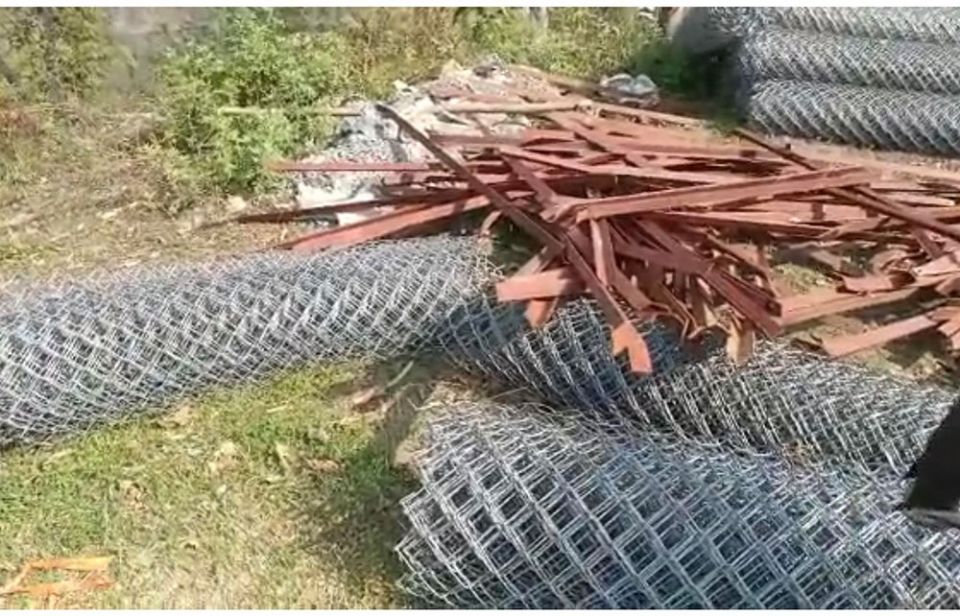
… they allege that the government is encouraging import of chain-linked materials
As the first phase of chain-linked fencing projects worth Nu 174 million (M) is being implemented in all 20 dzongkhags, local wire mesh manufacturers find themselves at the losing end.
Most of the tender bids are won by low-quoted bidders like traders and suppliers who run hardware businesses. “We hardly win any bids even if we quote a low rate,” the proprietor of Jurmed Phendhey Wire Netting in Shaba, Nima, said. “Many dzongkhags floated tenders on the e-GP system but I just got the supply orders worth Nu 20M so far.”
Nima said that his unit manufactures the highest standard quality parameters and technical specifications of the chain link at a reasonable price.
“However, traders prefer to import from across the border,” he said. “It is totally against the government policy of focusing on local products.”
In order to encourage local products, Phendeyling wire-netting based at Chuzom, Paro is offering the same rate for the same quality of chain-linked fences available in Jaigaon. “However, traders are not interested in buying from us,” proprietor Kencho said.
Thangtong Iron and Steel (TIS) at Toorsa, Phuentsholing participated in tender bids floated by six dzongkhags for chain-link but all were lost to traders. TIS’s general manager Phurba Wangi said that the manufacturers are at the losing end because they followed the quality parameters and technical specifications of the chain-linked fences set by the ministry.
One manufacturer from Pasakha said that due to the tendering system favouring the lowest bidder, traders sourcing and supplying from across the border are winning almost all the bids for chain-link with their quoted rates lower than local manufacturers.
“There are chances of the quality being compromised and not meeting the government’s required specification,” one said. “Such import of the items from outside will not only cause a huge foreign currency outflow but also deprive opportunity for local manufacturers to have a level playing field and help the country in import substitution,” he said.
“The irony is that when external agencies like Project Dantak are showing interest to procure materials from Bhutanese manufacturers for their developmental activities in Bhutan, our own system is encouraging import of materials from outside despite having the same products in the country,” a proprietor of a manufacturing unit in Phuentsholing said.
The manufacturers opined that the procuring agencies are not fully aware of the required technical specification. In the absence of these total technical parameters and specifications, according to them, it becomes very easy for the parties to take advantage of the system and ultimately the procuring agent would end up getting low-quality products.
Today, there are nine fencing material manufacturing units registered under the Department of Industry. However, half of the licensed manufacturers are yet to establish their factories.
“Dzongkhags follow procurement rules”
Clarifying speculations and concerns over the procurement, tendering and quality issues, Agriculture and Livestock Minister Yeshey Penjore said that the quality of materials and specifications are all set and monitored by the dzongkhag engineers.
Lyonpo Yeshey Penjor said that both the local and international suppliers across the border are all governed by the rules and procurements are done by the dzongkhag tendering committees as per the specification provided. “The ministry at the centre has no hands in procurement procedures,” he said during the 49th Meet the Press on April 14.
Prime Minister Dr Lotay Tshering said the government’s initiative to provide chain-linked fencing to farmers across the country was to curb the emerging human-wildlife conflict (HWC) and enhance food security.
He said that providing chain-linked fencing should not be like the construction of farm roads where villages have fewer people due to gungtong. “Fencing should be provided to places that engage in large-scale farming,” Lyonchen said. “If we don’t take care of our cultivated land, it will remain fallow.”
The ministry has identified chain-linked fencing as a major solution to tackle increasing cases of HWC and allotted Nu 500M in the current fiscal area.
In the first phase, the actual budget for chain-linked fencing project was Nu 188M targeting to construct 117km. “However, we are able to receive only Nu 173.80M which will cover 119km in 20 dzongkhags,” Lyonpo Yeshey Penjor said.
The ministry expects that the first phase project will cover around 3,000 acres of cultivated land and benefit 937 households.
Bhutanese farmers lose livestock and crops to wildlife every year. A study found that 69 percent of the 91 households in 10 villages within the biological corridor lost 251 animals to predators between 2016 and 2018.












